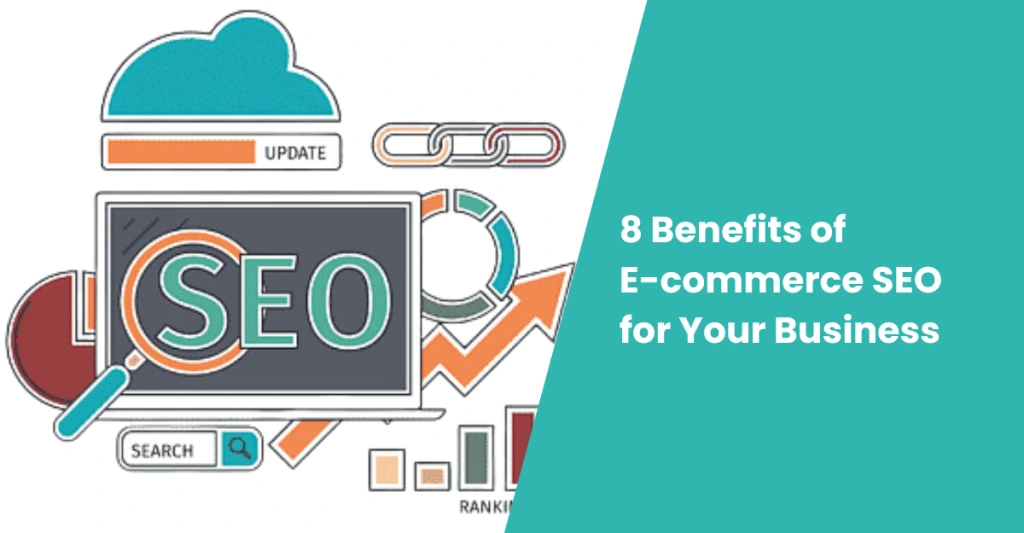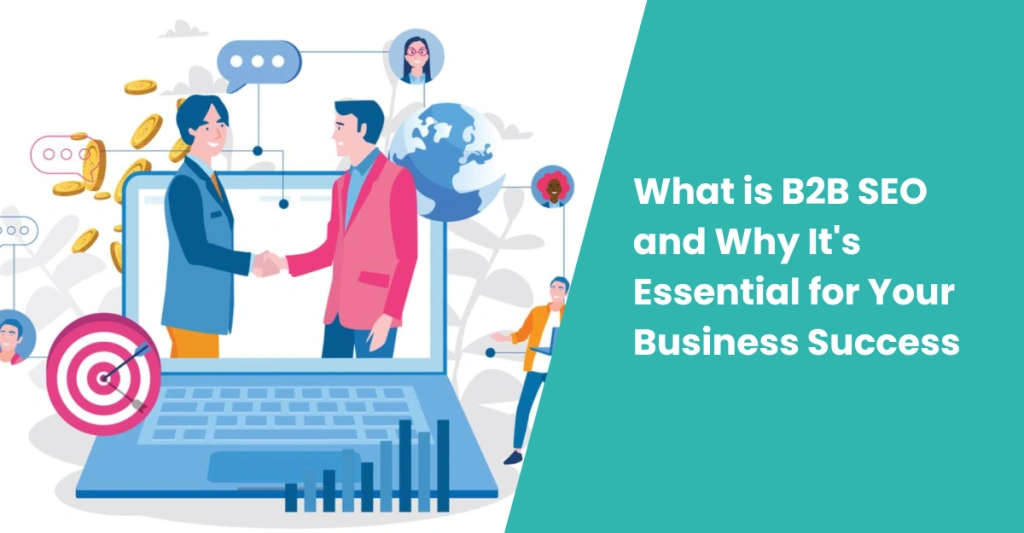LLM O vs Traditional SEO: Key Differences & Features
Did you know that AI-driven search models are responsible for 32% of all search results, a percentage that is expected to rise dramatically in 2025?
In 2025, SEO (Search Engine Optimisation) is changing faster than ever. SEO used to be all about keywords and backlinks, but now it’s more than that. As search engines like Google get smarter, they learn to understand what people want when they search. Businesses that don’t keep up with these changes could easily fall behind their competitors.
Let us learn more about how businesses can optimise their websites to appear on Google in 2025: Traditional SEO and LLM O. Whether you’re just getting started with SEO or looking to level up, understanding these two approaches will help your business succeed online.
What is LLM O?
LLM O stands for Large Language Model Optimization. It’s a new way of optimising content, focusing on how AI models like Chatgpt or Google’s Gemini understand and interpret information. These AI tools are designed to focus on the meaning behind words, not just individual keywords. In simpler terms, LLM O helps websites get noticed by answering questions naturally and conversationally.
Unlike traditional SEO, which focuses on using specific keywords to rank, LLM O understands the context of what people are searching for. This means businesses must create content that provides helpful, detailed answers that fit how people talk and ask questions online.
What is Traditional SEO?
Traditional SEO is the classic approach that most businesses are familiar with. It involves optimising your website to show up in search engine results by using keywords, backlinks, and metadata. This means placing the right words in the right places on your website, like in your titles, headings, and content.
In traditional SEO, the goal is to make sure search engines know exactly what your website is about by using keywords that match what people are searching for. While this method still works in 2025, it’s only part of the equation. It’s essential, but it must be combined with newer techniques, like LLM O, to succeed.
With the rise of AI and LLM O, the focus has shifted from just using keywords to building content around themes, related topics, and user intent.
A Quick Comparison OF Traditional SEO vs. LLM O
| Aspect | Traditional SEO | LLM O |
| Focus | Keywords and backlinks | Context, meaning, and conversational queries |
| Content Approach | Keyword-centric, specific phrases | Theme-based, conversational, natural language |
| User Intent | Focuses on matching exact search terms | Focuses on understanding broader user intent |
| Search Behavior | Short, simple search phrases | Long-tail, full questions, conversational prompts |
| Metrics | Bounce rate, CTR, time on page | Helpfulness, user satisfaction, content depth |
Traditional SEO: Keyword-Centric
– In traditional SEO, ranking well meant finding the right keywords and placing them in your content. The idea was simple: use the words people search for and rank for those terms.
– The challenge was finding the right balance to avoid keyword stuffing, where the content seemed unnatural or forced.
LLM O: Context is Key
A 2024 HubSpot survey found that 70% of marketers now say content relevance and user intent are more important than simple keyword usage. Here is how LLM SEO takes a more natural approach:
– It’s about understanding the topic deeply and answering questions naturally. Rather than just focusing on a keyword like “email marketing tools,” the content might explain how these tools conversationally solve everyday problems.
– LLM SEO looks at the context of a search and provides answers that fit the whole query, not just isolated keywords.
The Rise of Conversational Search
Search engines are becoming more conversational. Instead of typing short phrases, users ask full questions, like “What are the best vegan proteins for muscle gain?” LLM O thrives on these kinds of natural, conversational queries.
Traditional SEO: Short, Keyword-Driven Queries
In traditional SEO, users often typed short phrases like “best vegan protein” into search engines, and websites optimised for these phrases would show up in the results.
These searches were often direct, leading to standard search results with a list of links.
LLM O: Long-Tail and Conversational Queries
According to a 2024 Statista report, over 55% of search queries will be voice-based by 2025, which means more people will ask search engines for specific, conversational answers.
LLMS can now handle complex questions, like “What’s the best vegan protein for muscle gain in my 40s?” By understanding the full context of the question, AI tools can generate more detailed answers.
This requires businesses to create content that answers specific, detailed questions rather than just targeting generic keywords.
Technical SEO Still Matters, But in a Different Way
While traditional SEO focused heavily on performance, like site speed, mobile-friendliness, and meta tags, LLM O adds a layer of structured data and clarity to help AI models understand your content better.
Traditional SEO: Technical Performance
– Speed, mobile optimisation, and easy navigation are still crucial for ranking in traditional SEO. Search engines reward websites that load quickly and provide a smooth experience for users.
– These technical factors ensure that users stay on the site long enough to find the necessary information.
LLM O: Structured Data for AI
A Moz survey in 2023 found that 73% of SEO experts agree that schema markup is crucial for ensuring that content is understood by AI models and accurately displayed in search results.
– LLM O strongly emphasises structured data, such as schema markup, which helps search engines like Google understand the content more nuancedly.
– AI tools rely on structured content to deliver accurate, AI-generated summaries, meaning your content must be well-organised and easily interpretable.
How SEO Has Evolved: From Keywords to Meaningful Content
Traditional SEO relied heavily on metrics like bounce rate, dwell time, and CTR (Click-Through Rate) to measure success. In LLM O, the focus is now on helpfulness—how well your content answers a user’s specific question or solves a problem.
Traditional SEO: Engagement Metrics
– Bounce rate and time spent on the page were essential indicators of the content’s engagement. Websites that could keep users on the page were often ranked higher.
– These metrics showed whether users found the content interesting, but didn’t necessarily reflect whether the content was helpful or meaningful.
LLM O: Helpfulness is Key
According to Google’s 2024 content guidelines, websites with helpful, user-focused content saw a 60% increase in organic traffic compared to those using general, keyword-heavy content.
Google’s Helpful Content System now rewards content that provides real value. It’s no longer just about keeping users on the page; it’s about giving them the answers they are searching for.
LLM O evaluates how well your content helps users by providing in-depth, actionable advice and practical solutions.
E-E-A-T and the Trust Factor
Google’s E-E-A-T (Experience, Expertise, Authoritativeness, and Trustworthiness) is more important than ever in 2025. Do you know that a 2023 Google survey found that 85% of users trust content from credible sources with verified expertise, underscoring the importance of E-E-A-T in today’s SEO strategies. LLM O uses this principle to assess the credibility of content and determine how it ranks.
Traditional SEO: Building Authority
– In traditional SEO, businesses could build authority by gaining backlinks from high-quality sources, signalling trustworthiness to Google.
– These backlinks helped show that the website was relevant and authoritative in its niche.
LLM O: Authenticity and Experience Matter
– LLM O now values authentic, first-hand experiences and customer stories more than ever. AI models can detect when content is rehashed or lacks genuine authority.
– Businesses that share real-world experiences, customer reviews, or expert insights are likelier to rank higher with LLM O.
How You Can Do LLM O
To effectively implement LLM O, businesses must create content that matches user intent and provides meaningful answers. Here’s how to get started:
Understand User Intent:
LLM O focuses on the broader intent behind a user’s search, ensuring content matches their deeper needs. This approach goes beyond specific keywords to ensure your content directly addresses users’ questions.
Write in Natural Language:
Optimizing for LLM O requires creating content that reads naturally, like a conversation. Focus on crafting content that provides detailed, conversational answers, mimicking how people ask questions in everyday speech.
Optimise for Voice Search:
Voice search is on the rise, and with it comes the need for content that answers long-tail, conversational queries. It’s essential to incorporate phrases that reflect how users speak, ensuring your content ranks for voice-activated search queries.
Leverage Geo Generative Engine Optimisation:
Geo-generative engine optimisation (ggeo) is a powerful LLM O technique that focuses on tailoring content based on location-specific search intent. AI models can now understand not just what users are searching for but where they are searching from. This means businesses can boost visibility by creating conversational and geo-relevant content.
Use Structured Data:
Structured data, such as schema markup, helps search engines understand the context of your content. This allows AI models to interpret your page better, making it easier to display in rich results and improving overall visibility.
Factors that Help in Ranking with LLM O
Ranking with LLM O is not just about keywords it’s about creating content that genuinely serves the user’s needs. Here are the factors that contribute to strong rankings in 2025:
Content Relevance:
Content must align with the user’s query and solve their problem in detail. Google rewards content that provides answers in a comprehensive, relevant manner rather than just matching specific search terms.
Content Depth and Helpfulness:
Google now emphasises content that provides in-depth, useful information. The more comprehensive and helpful your content is, the better it will perform, especially when answering complex user queries.
Content Depth and Helpfulness:
With LLM O, incorporating semantic depth, such as related entities, contextually rich phrases, and natural question-answer structures, enhances relevance and aligns more closely with how AI models understand and rank content.
E-E-A-T (Expertise, Authoritativeness, Trustworthiness):
To rank well, your content must showcase expertise and be trustworthy. Google’s algorithms now assess the credibility of your content, rewarding websites with well-researched, authoritative information.
Backlinks and Internal Links:
Quality backlinks remain important, but LLM O also values strong internal linking. A well-structured site with related internal links boosts the overall authority and navigability, helping users find relevant content easily.
Conclusion
Both traditional SEO and LLM O are crucial in 2025. Rather than focusing on just one, businesses should combine both approaches to stay competitive. Traditional SEO will help with the foundation, but it can’t reach the LLM-based strategies too well. While LLM O will ensure that your content speaks directly to your audience in a way that search engines understand.
At AdsCult, we specialise in leveraging the power of LLM O to help businesses stay ahead of the curve. We combine traditional SEO foundations with cutting-edge AI-driven strategies, creating optimized content that resonates with users and search engines. Whether you’re looking to improve rankings or build meaningful content, we ensure your website is ready for the future of SEO in 2025.



